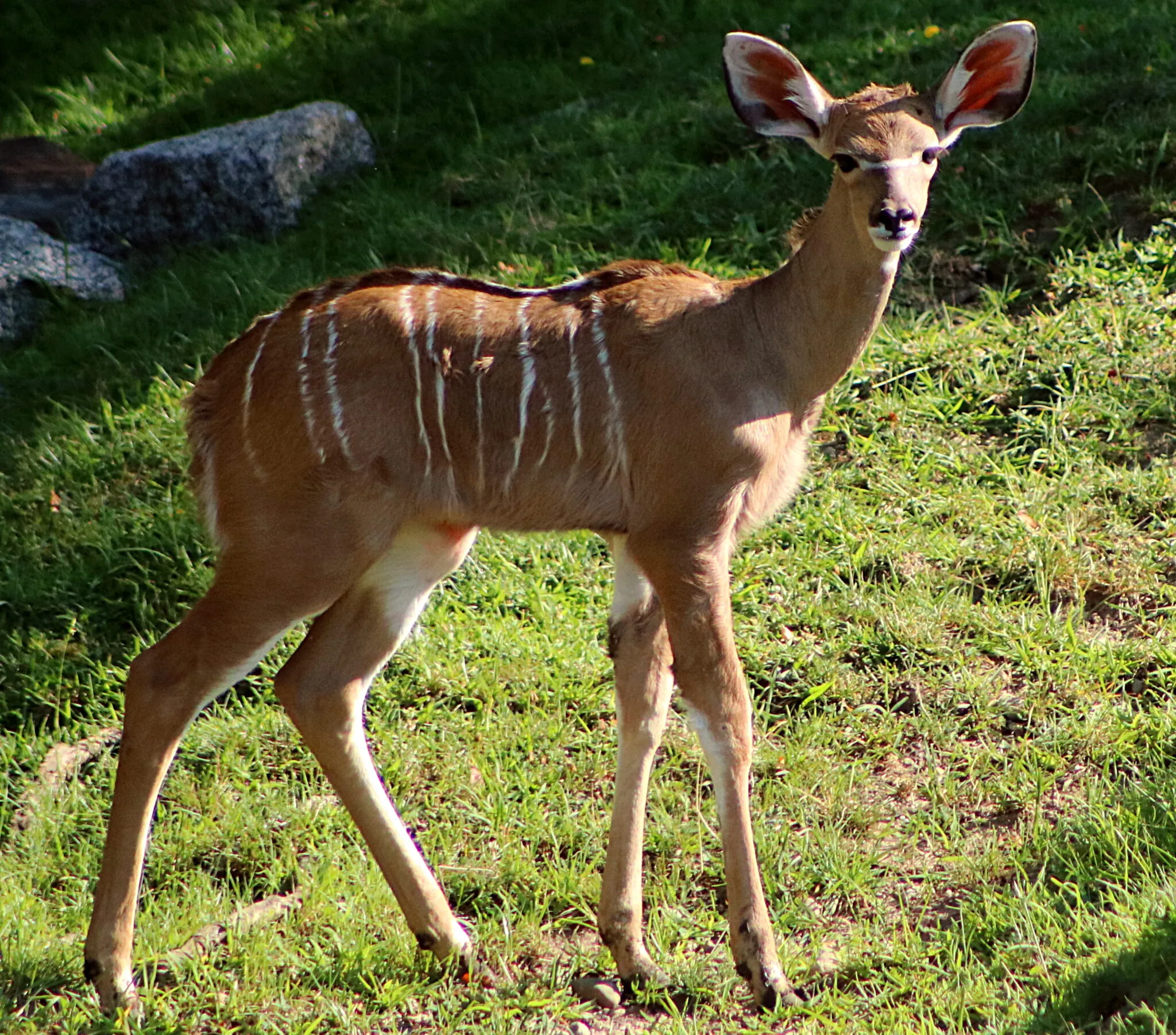-
Menu
- Plan Your Visit
- Meet The Animals
- Check Out Events
- Memberships
- About The Zoo
- Support the Zoo
- Conservation
- Education
- Groups & Private Events
- Zoo News
- Contact
- Indianapolis Prize
- Global Center for Species Survival
- Schedule
- Donate
- Membership
- Tickets

- Plan Your Visit
- Meet The Animals
- Check Out Events
- Memberships
- About The Zoo
- Support the Zoo
- Conservation
- Education
- Groups & Private Events
- Zoo News
- Contact
- Indianapolis Prize
- Global Center for Species Survival

Greater Kudu
Tragelaphus strepsiceros
About
Kudu are graceful browsers found across varied habitats of eastern and southern Africa. They feed on many different parts of plants, so they tend to be found wherever plants thrive. Kudu calves are hidden by their mom in the brush and grasses for about 2 weeks after birth. Females live in small herds with each other and their young. Males may live alone or with other males except for breeding. Herd life provides protection from predators, but kudu can also run—fast, up to 60 miles per hour!
Look for their dramatic, twisting horns, which can be up to 6 feet long! They also have up to 10 stripes on their tan backs and sides, which helps them camouflage among the vegetation.

Conservation
Greater kudu are at low risk of extinction. They are widely hunted in managed programs. But habitat loss remains a threat to kudu in certain areas. Supporting protected areas locally and globally provides homes for wildlife!
The Zoo partners with other groups to support the conservation of large African mammals and help people live alongside wildlife through the Tanzania Conservation Research Program.
WHERE ARE THEY AT THE ZOO?

